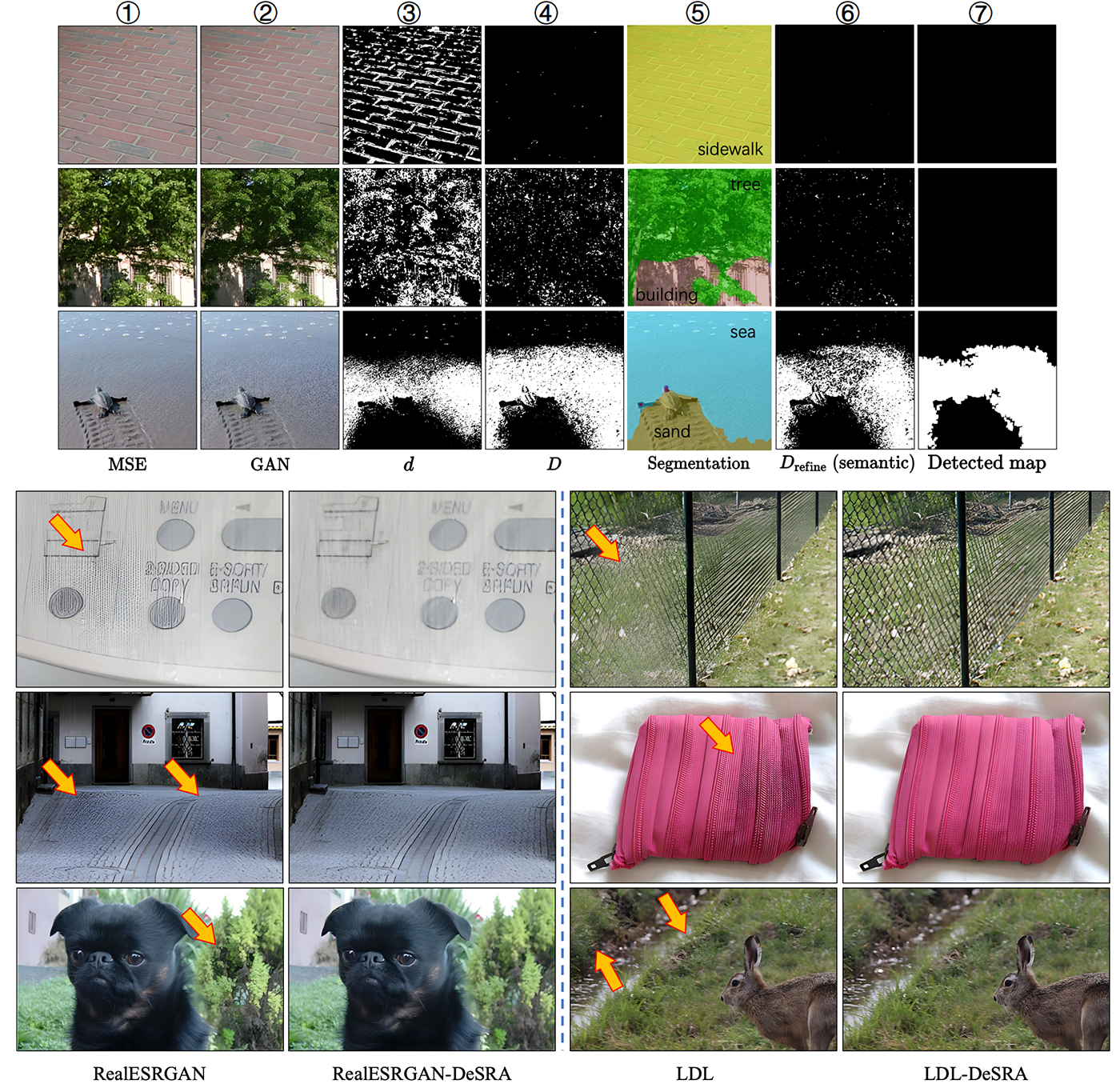DeSRA: Detect and Delete the Artifacts of GAN-based Real-World Super-Resolution Models
Liangbin Xie, Xintao Wang, Xiangyu Chen, Gen Li, Ying Shan, Jiantao Zhou, Chao Dong

Image super-resolution (SR) with generative adversarial networks (GAN) has achieved great success in restoring realistic details. However, it is notorious that GAN-based SR models will inevitably produce unpleasant and undesirable artifacts, especially in practical scenarios. Previous works typically suppress artifacts with an extra loss penalty in the training phase. They only work for in-distribution artifact types generated during training. When applied in real-world scenarios, we observe that those improved methods still generate obviously annoying artifacts during inference. In this paper, we analyze the cause and characteristics of the GAN artifacts produced in unseen test data without ground-truths. We then develop a novel method, namely, DeSRA, to Detect and then ``Delete’’ those SR Artifacts in practice. Specifically, we propose to measure a relative local variance distance from MSE-SR results and GAN-SR results, and locate the problematic areas based on the above distance and semantic-aware thresholds. After detecting the artifact regions, we develop a finetune procedure to improve GAN-based SR models with a few samples, so that they can deal with similar types of artifacts in more unseen real data. Equipped with our DeSRA, we can successfully eliminate artifacts from inference and improve the ability of SR models to be applied in real-world scenarios.